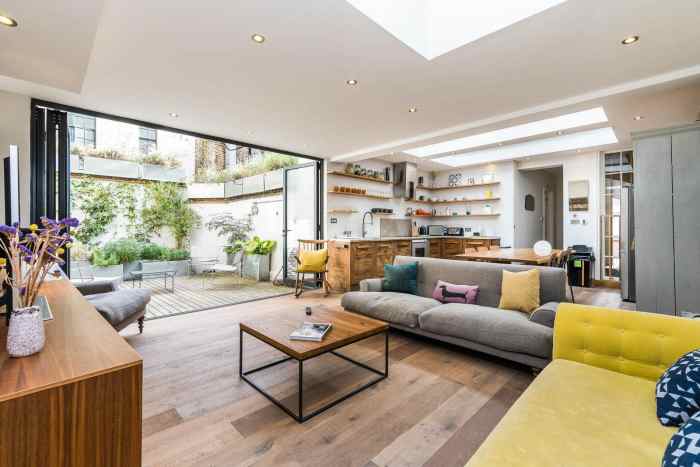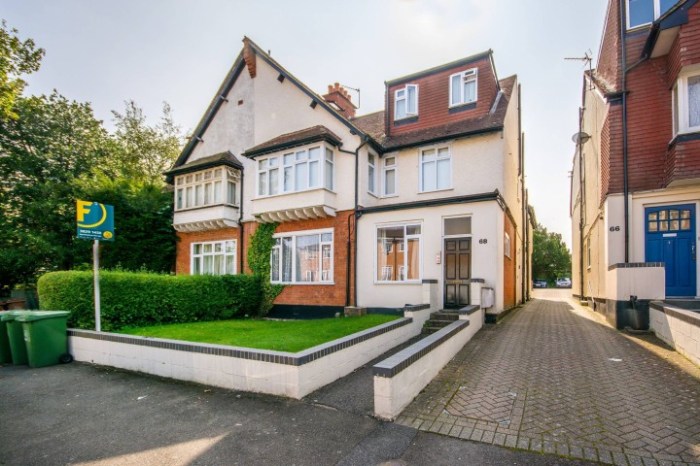Houses to Rent in London A Comprehensive Guide
London Rental Market Overview
Houses to rent in london – The London rental market is a dynamic and competitive landscape, influenced by a multitude of factors. Understanding current trends and price variations across different boroughs is crucial for prospective tenants.
Current State of the London Rental Market
Currently, the London rental market exhibits high demand and relatively low supply, leading to increased rental costs. Competition for desirable properties remains fierce, particularly in central boroughs. While some areas are seeing slight rental decreases, the overall trend points towards sustained high prices.
Key Trends Shaping the Market
Three key trends are currently shaping the London rental market: increasing demand from both domestic and international renters, limited new housing construction to meet this demand, and the rising cost of living impacting affordability. These factors contribute to the competitive environment and elevated rental prices.
Rental Prices in Different London Boroughs
Rental prices vary significantly across London’s diverse boroughs. Central boroughs, known for their proximity to employment hubs and amenities, command significantly higher rents than those further out. Areas with excellent transport links also tend to attract higher prices. Conversely, outer boroughs often offer more affordable options, but with a potential trade-off in terms of commute times and access to amenities.
Average Rental Costs Across Five Central London Boroughs
| Borough | Average 1-Bedroom (£) | Average 2-Bedroom (£) | Average 3-Bedroom (£) |
|---|---|---|---|
| Kensington & Chelsea | 2500 | 4000 | 6000 |
| Westminster | 2200 | 3500 | 5500 |
| Camden | 2000 | 3200 | 4800 |
| Islington | 1800 | 2800 | 4200 |
| City of London | 2300 | 3800 | 5800 |
Note
These figures are approximate averages and can vary based on specific property features and location within the borough.*
Types of Rental Properties Available
London offers a wide variety of rental properties to suit diverse needs and budgets. Understanding the differences between these types is crucial for finding the right fit.
Types of Rental Properties and Their Features
- Flats: Apartments within larger buildings, often offering amenities like shared gardens or concierge services. Sizes vary greatly, from studios to large multi-bedroom apartments.
- Houses: Detached, semi-detached, or terraced houses, providing more space and privacy than flats. Features can range from traditional Victorian properties to modern new builds.
- Studios: Compact self-contained units, typically combining living, sleeping, and cooking areas in a single space. Ideal for single occupants or those seeking affordable city living.
Unique Rental Property Features in London
Many London rental properties boast unique features reflecting the city’s rich history and architectural diversity. Examples include period features in Victorian houses (e.g., high ceilings, ornate fireplaces), modern amenities in new developments (e.g., private balconies, gyms), and charming mews houses tucked away in quiet residential streets.
Factors Influencing Rental Costs
Several factors significantly impact rental costs in London, making it essential to understand these influences when searching for a property.
Factors Affecting Rental Prices
Location is the most significant factor, with central boroughs commanding the highest prices. Property size, amenities (e.g., parking, balconies, modern appliances), and the overall condition of the property also play a crucial role. The presence of transport links significantly boosts rental value, as properties near tube stations or major bus routes are highly sought after.
Impact of Transport Links on Rental Prices
Properties within walking distance of tube stations or major bus routes generally command higher rents due to increased convenience and reduced commute times. This is especially true in central London, where efficient public transport is vital.
Rental Costs: Parking vs. No Parking
Properties with dedicated parking spaces are significantly more expensive than those without. Parking is a highly valued amenity in London, particularly in areas with limited street parking.
Relationship Between Property Features and Rental Costs
The relationship between property features and rental costs is complex and interconnected. A flowchart illustrating this would show various factors (location, size, amenities, transport links) converging to influence the final rental price.
Finding Rental Properties in London
Finding a rental property in London requires a strategic approach, utilizing various resources and understanding the application process.
Methods for Finding Rental Properties
- Online Portals: Websites like Rightmove, Zoopla, and SpareRoom offer extensive listings of rental properties across London. These platforms provide filters for various criteria, making it easier to find suitable options.
- Estate Agents: Estate agents provide a more personalized service, guiding you through the process and often having access to properties not listed online. However, they typically charge fees.
Advantages and Disadvantages of Each Method, Houses to rent in london
Online portals offer convenience and a wide selection, but may lack personalized assistance. Estate agents provide expert guidance but may charge fees and potentially have limited listings compared to online platforms.
Applying for a Rental Property
The application process typically involves providing references, proof of income, and undergoing credit checks. Landlords often require a deposit equivalent to several months’ rent.
Step-by-Step Guide to Finding a Rental Property
- Define your needs and budget: Determine your desired location, property type, and maximum rental cost.
- Search online portals and/or contact estate agents: Use relevant s and filters to narrow down your search.
- View properties: Schedule viewings of properties that meet your criteria.
- Make an offer: Once you’ve found a suitable property, make an offer to the landlord or estate agent.
- Complete the application process: Provide necessary documentation and undergo referencing and credit checks.
- Sign the tenancy agreement: Review the agreement carefully before signing.
Tenant Rights and Responsibilities
Understanding tenant rights and responsibilities is essential for a positive rental experience. A strong tenancy agreement forms the basis of this relationship.
Tenant Rights and Responsibilities

Source: vrbo.com
Tenants have rights regarding the condition of the property, repairs, and privacy. Responsibilities include paying rent on time, maintaining the property in a reasonable condition, and adhering to the terms of the tenancy agreement.
Importance of a Tenancy Agreement
The tenancy agreement is a legally binding contract outlining the terms of the tenancy, including rent, duration, and responsibilities of both landlord and tenant. It is crucial to read and understand the agreement thoroughly before signing.
Common Landlord-Tenant Issues
Common issues include disputes over repairs, deposit returns, and breaches of the tenancy agreement. Open communication and adherence to the terms of the agreement can help prevent these issues.
Best Practices for a Positive Landlord-Tenant Relationship
Maintaining open communication, addressing issues promptly, and respecting each other’s rights and responsibilities are key to a positive landlord-tenant relationship.
Illustrative Examples of London Rental Properties: Houses To Rent In London
To illustrate the diversity of rental properties in London, let’s consider three examples.
Victorian Terraced House in Central London
A typical Victorian terraced house in a central borough like Kensington might feature high ceilings, ornate fireplaces, and period details. Rental costs could range from £4,000 to £8,000 per month, depending on size and condition.
Modern Apartment in Canary Wharf

Source: co.uk
A modern apartment in a newly developed building in Canary Wharf would likely offer contemporary amenities like a private balcony, gym access, and secure parking. Rental costs would be higher, potentially ranging from £3,500 to £6,000 per month, reflecting the area’s desirability and modern features.
Charming Studio Flat in South London
A charming studio flat in a quiet residential area of South London, such as Clapham or Dulwich, might offer a cozy and affordable option. Rent could range from £1,500 to £2,200 per month, depending on size and specific location within the borough. The advantage lies in the quieter, more residential setting, while still being within reasonable commuting distance to central London.
Key Questions Answered
What is the average deposit required for a rental property in London?
Deposits typically range from four to six weeks’ rent, but this can vary depending on the landlord and property.
How long does the rental application process usually take?
It can take anywhere from a few days to several weeks, depending on the landlord and the number of applicants.
What are the common hidden costs associated with renting in London?
Finding the right house to rent in London can be challenging, given the diverse options and competitive market. However, if you’re considering a change of scenery, perhaps exploring options outside the UK might be worthwhile. For instance, you could investigate properties like those available at houses for rent woodland hills , offering a different lifestyle. Returning to the London market, remember to factor in commute times and desired amenities when making your final decision.
These can include agency fees, referencing fees, and potentially utility connection fees.
What should I look for in a tenancy agreement?
Carefully review all terms and conditions, including rent amount, payment schedule, permitted use of the property, and notice periods.




















